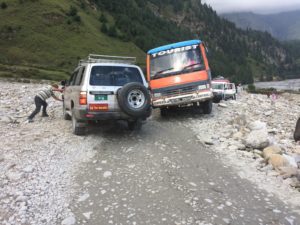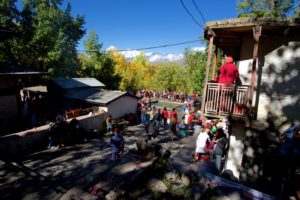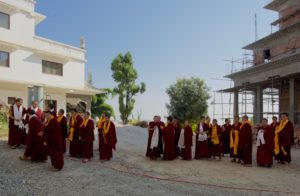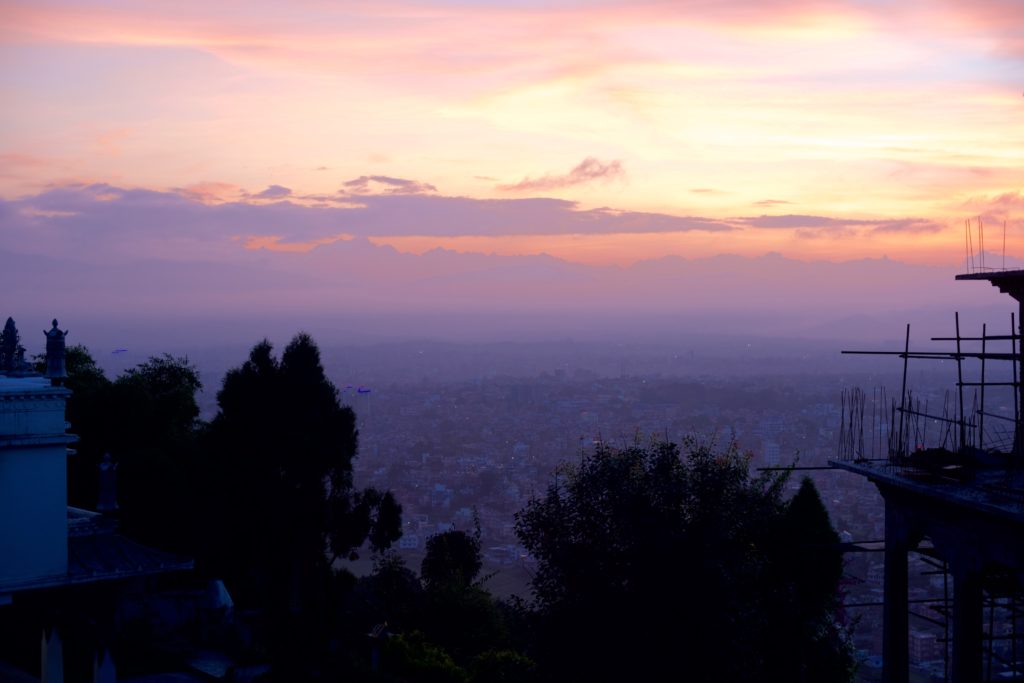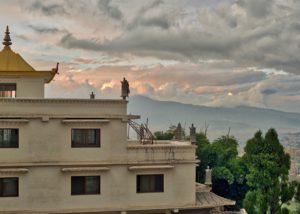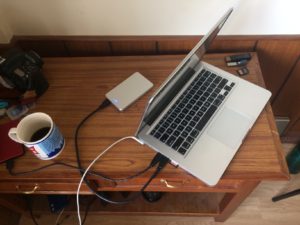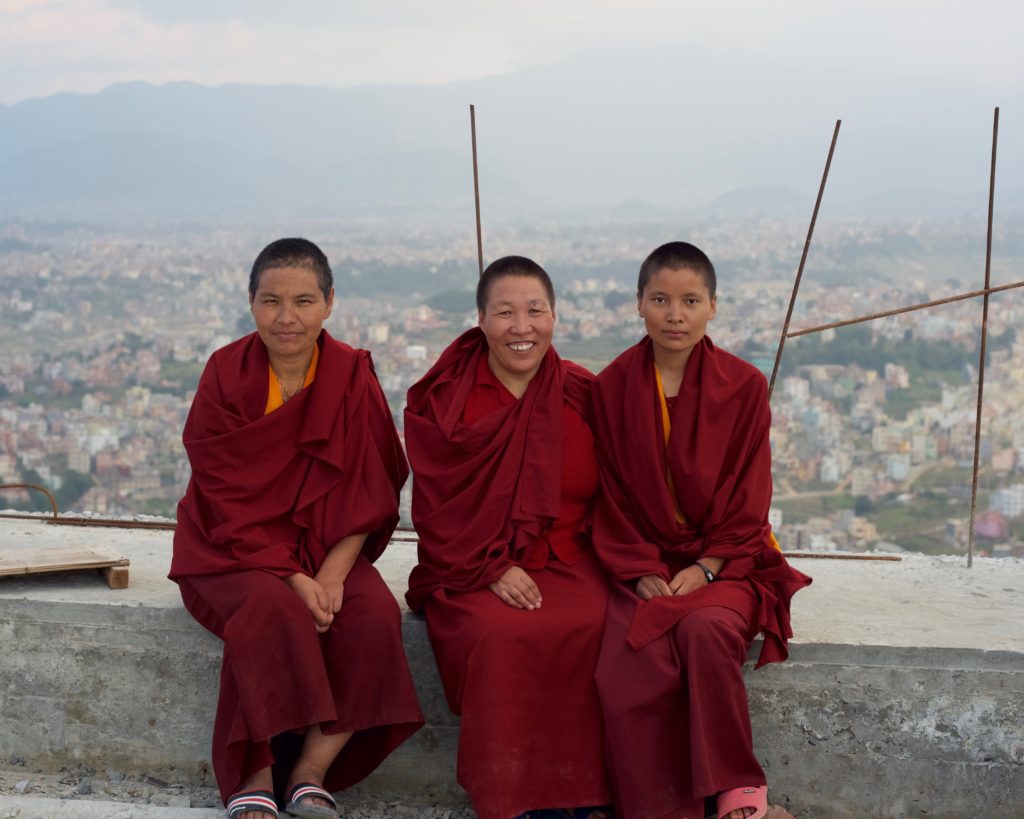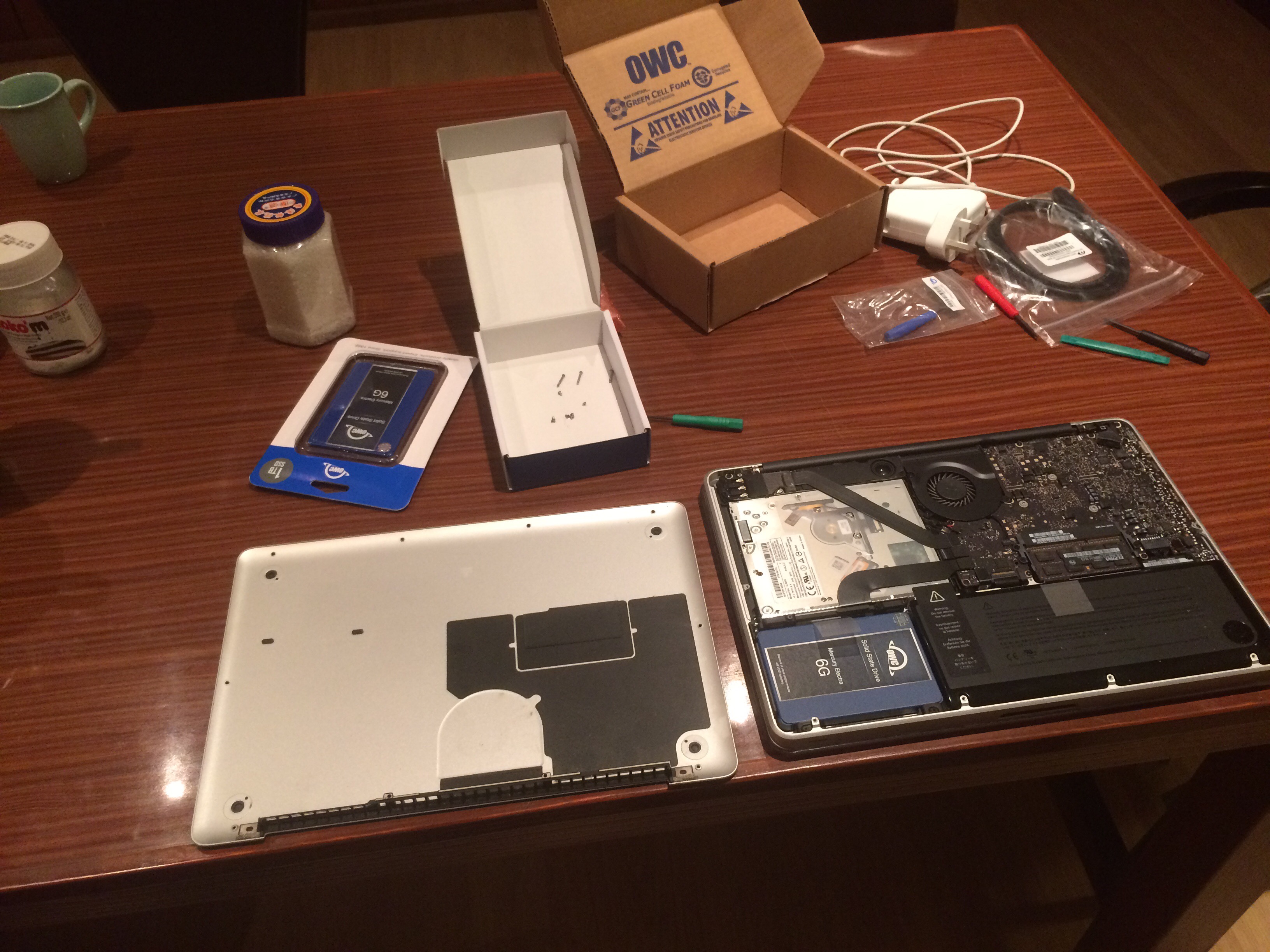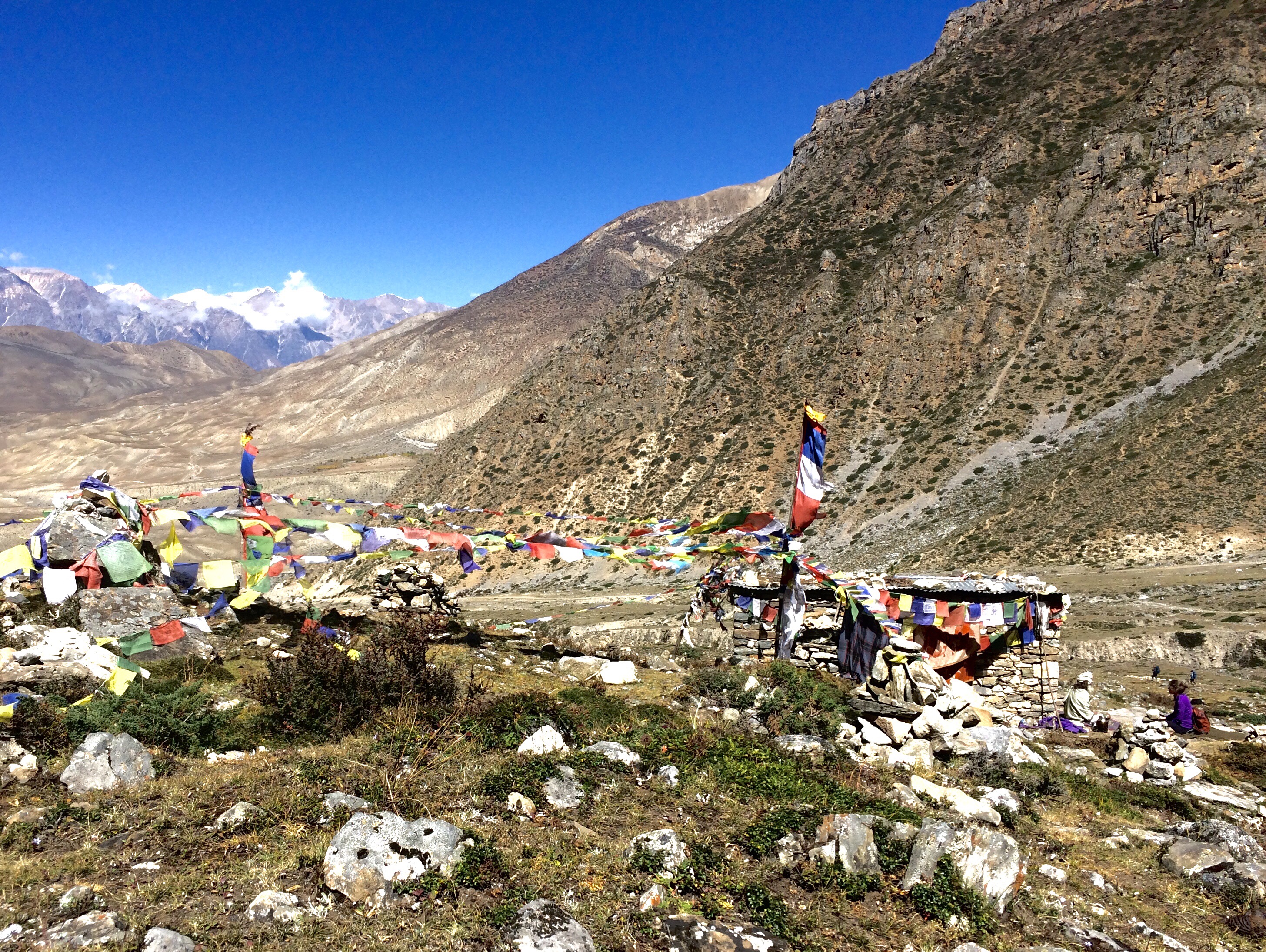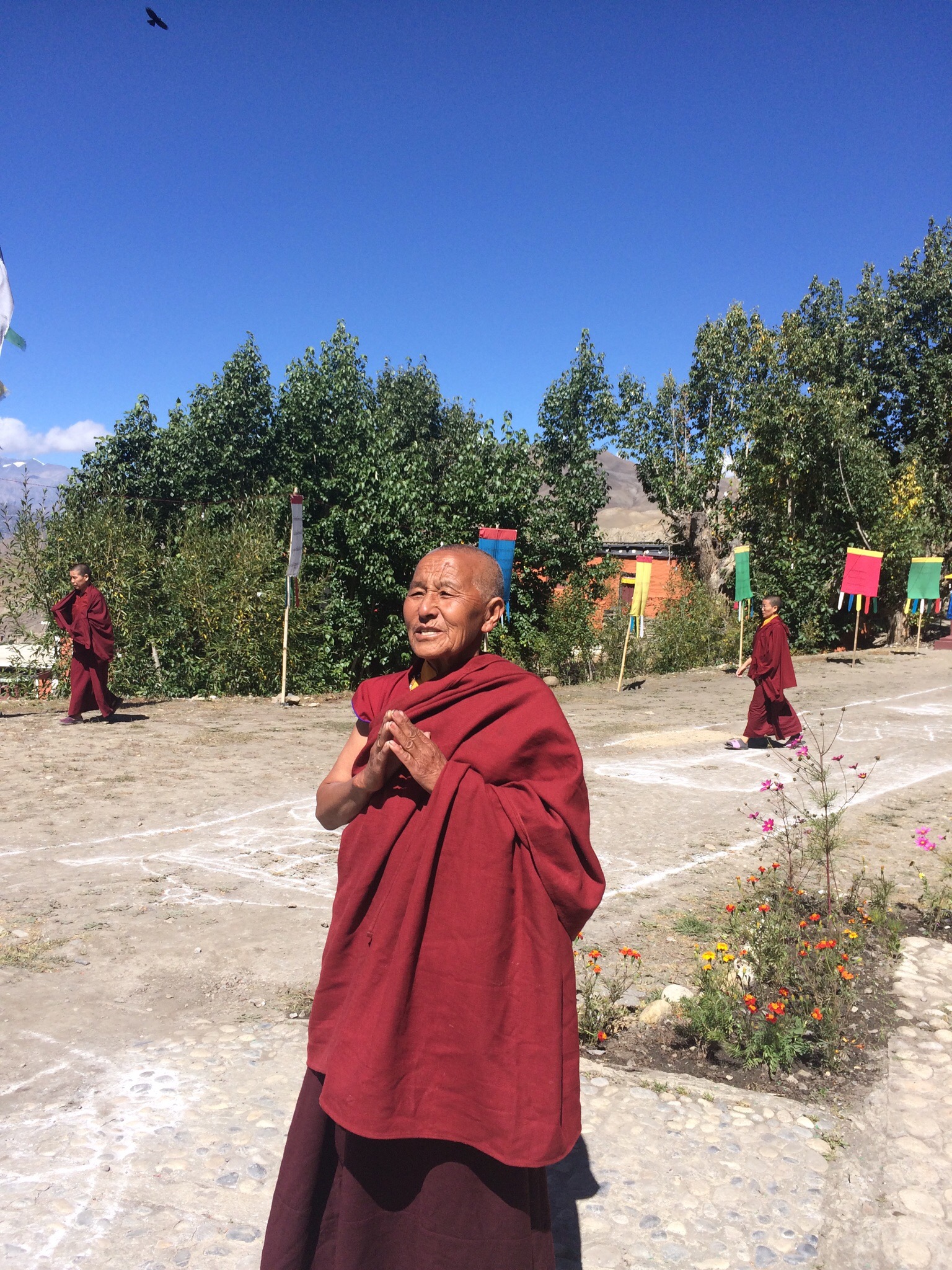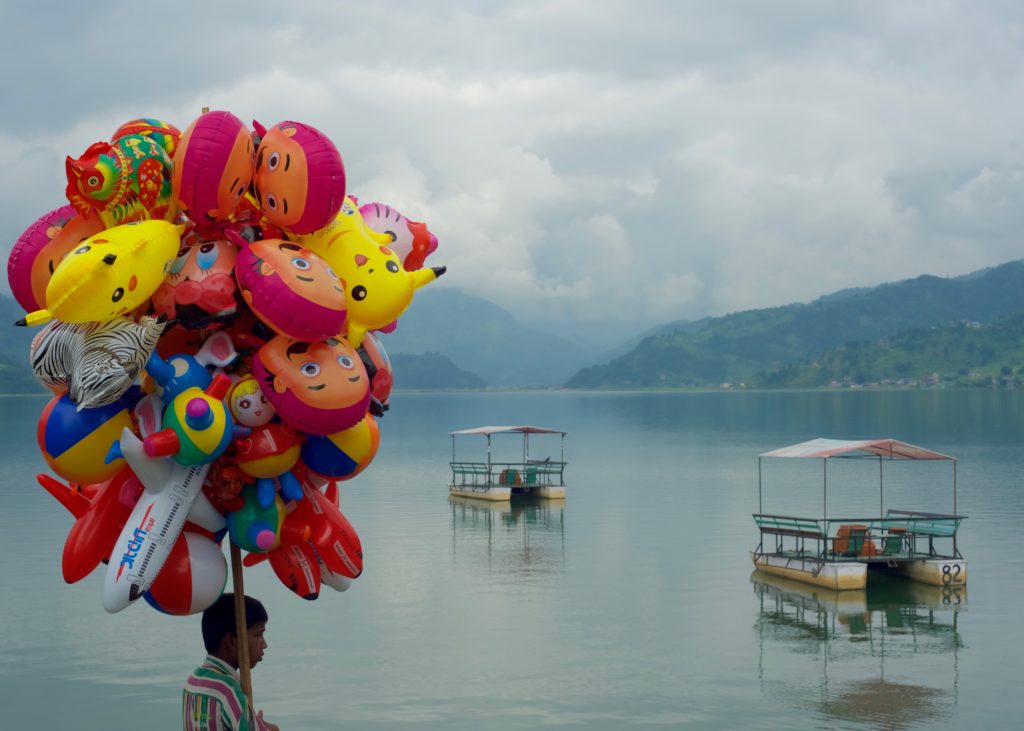As promised I have prepared a collection of the photos from our trip to the Mustang Region; through Tatopani, Jomsom, to Rani Pauwa (where we stayed), hiking up to Muktinath and the trails above it. For the more visual “reader”, feel free to skip to the links of this post to check out photos.
The drive (Road to Muktinath) included sections of roads that would rival the unpaved, high mountain roads through Colorado. The difference is that these welcomed motorcycles, “hikers”, mountain bikes, small vehicles the size of a mini cooper, transport trucks, Landcruisers (and other 4 wheel drive varieties) and many, many buses. The pictures tell most of the story. What may not be evident in the photos is the variety of transport we had to take to get to our destination.
Two thirds of the way, our Landcruiser’s steering came apart. I’m not a mechanic but it appeared to be the front steering arm. One of you gear heads will be able to tell by looking at the picture. This breakdown fortunately happened in a stream bed (mostly dry) that spanned at least 100 yards across the valley. Our driver lost all control of the steering wheel but glided to a stop, almost off the road. With some help of fellow travelers, our vehicle was pushed to the side to clear the jam that was forming in both directions. As you will see in the photos, there are many less hospitable locations where the loss of steering might have been a tragic breakdown. In this case, it only cost us a few hours during which time our driver and wrangler found a alternative vehicle that, though cramped, moved us up the road. We were then transferred to a third vehicle (after dark) and taken up the last incline to our Hotel in Rani Pauwa. Another Nepali adventure!
Muktinath is home to 108 fountains of water, streaming through bull headed spouts streaming down from the Himalayas. It sits higher than Gargon Ling Nunnery where we attended the Puja. I was told that, of the major pilgrimage sites for Hindus, it is the most important for them to visit before they pass away. This became evident to us as we watched a steady stream of elderly people transported by sometimes unruly Mustang horses up the slope from Rani Pauwa to Muktinath. Faithful people (both Hindu and Buddhist) bathe in a pool and make their way around the 3 walls of streaming fountains. It is a festive and joyful place.
Some of the pictures (Gargon Ling Puja) show the Puja and some show our hike with a Tibetan woman, Tsering, from Seattle who joined us at the Puja. She was a very free spirit with an infectious laugh and a good grasp of English, Tibetan and Nepali. I can’t thank her enough for the insight she gave us, not to mention the many laughs. The photos show us hiking above Muktinath to visit Padmasambhava’s kitchen. I don’t know the whole story of this place but know that Padmasambhava (also know as Guru Rimpoche) was a great Indian Mahasiddha who visited this valley on his way to Tibet in the 8th century. There are many places here and in other parts of Nepal where he lived and practiced. He is acknowledged as the man who tamed the wild Tibetan temperament and environment and forged a relationship with King Trisong Deutsen. They, along with other Mahasiddha’s brought Buddhism to from India to Tibet. You can read more in a book, “The Lotus-Born, The Life Story of Padmasambhava, by Yeshe Tsogyal, translated by Eric Pema Kunsang.”
It is over 2 weeks now since we journeyed to Muktinath. While life here is pretty slow and measured with few activities, we seem to keep pretty busy. The crash of my computer certainly required some time. We have been teaching, taking short trips, and helped organize and attended a teaching given by Rinpoche here at the nunnery. On top of this are the daily chores that take more attention than they might at home; gathering water, washing clothes, taking a “shower”, among them. And then there are the interesting mysteries like, “Who took my sheets off the line today?” and “How can I get them back?” Mysteries that are complicated by a lack of common language. More on that in the days to come.
I hope you are all well.

